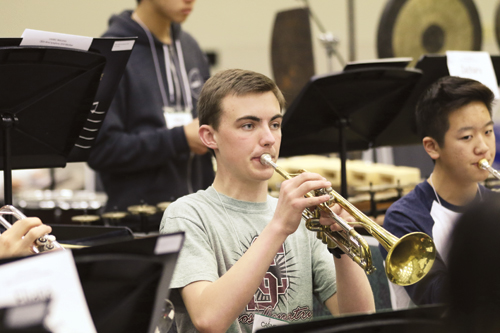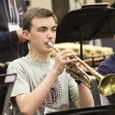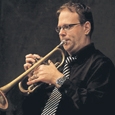
Articulation gives definition to the notes of a musical phrase. As in painting, the edges of the notes can be sharp and well-defined or they may have a softer edge. Good musicians consciously adjust the articulation style for a particular passage; any variation in the articulation will be intentional rather than the result of inconsistent technique.
Single Tonguing
As you are probably already aware, single tonguing is used when the notes are at a slow enough tempo that the tip of the tongue has time to return to the hard palate (roof of the mouth, toward the front) for each new note, resulting in tou tou tou tou tou tou. As notes become faster than players can single tongue, students will alternate tou with kou. This alternation is called multiple tonguing.
Many method books spell the tonguing syllables tu and ku. The most popular pedagogical source of these syllables was a book written by Jean- Baptiste Arban, a Frenchman. For this reason, the pronunciation of these syllables should be understood in that language, and they should rhyme with boo. This article will spell them tou and kou to emphasize the correct pronunciation.
The tou and kou syllables allow a quicker double and triple tongue than American approximation tuh and kuh. The pure tou is pronounced more towards the front of the mouth, while kuh is pronounced in the back of the mouth. The efficiency of the tou will create a smoother, quicker articulation for your students.
Try having your players pronounce tou tou tou tou tou out loud, keeping a seamless, steady sound. Have them keep the air flow constant – the tongue simply intersects the airflow to create the articulation at the beginning of the note. The tongue never stops the air; it merely interrupts a continuous airflow.
Now have them try the same thing with kou. They should use the very tip of their tongue to pronounce tou, and the front middle portion to pronounce kou. Once they have practiced these syllables out loud to a high level of consistency, have them try the same thing on their instrument.
Multiple Tonguing
Once students have established a fast and consistent single-tonguing on both syllables, they are ready to begin multiple tonguing. You will actually have them start with triple tonguing, since this does not require them to switch between tou and kou on every single note.
Once they get a firm grasp of how to triple tongue tou-tou-kou, they will be better equipped to handle the rapid alternation of the tou-kou in double tonguing. Triple tonguing combines the syllables of double tonguing in a three-note pattern. If triple tonguing has already been established, you simple have to drop a syllable for double tonguing.
Like single tonguing, multiple tonguing must be practiced slowly and carefully to maintain good control at every speed. In multiple tonguing, kou is the weakest syllable, simply because students have used tou since their beginning days.
Now that players have learned multiple tonguing, practice articulating slow passages using only the kou. The goal is to make the kou sound identical to tou. Once they feel comfortable with this articulation, have them add the tou and kou together slowly. Have them gradually increase the speed, varying the dynamic as well so their tonguing is flexible.
Multiple tonguing is a rapid reflection of their single tongue. If your students do not have a rapid single tongue, their multiple tongue will not be fast enough either.
Etude Books That Focus Specifically on Tonguing
Complete Conservatory Method by Jean-Baptiste Arban (Colin, 1981).
Exercises for Double and Triple Tonguing by Edwin Franko Goldman (Carl Fischer, 1912).
Double and Triple Tonguing by Sigmund Hering (Carl Fischer, 2004).
Practical Studies for Trumpet by Edwin Franko Goldman (Carl Fischer, 1921).
Trumpet Method (Book I) by Allen Vizzutti (Alfred, 1991).
Twenty-Seven Groups of Exercises by Earl Irons (Southern, 1977).
Thirty Six Etudes Transcendates by Theo Charlier (Leduc, 1946) – etudes #16 and #18.






